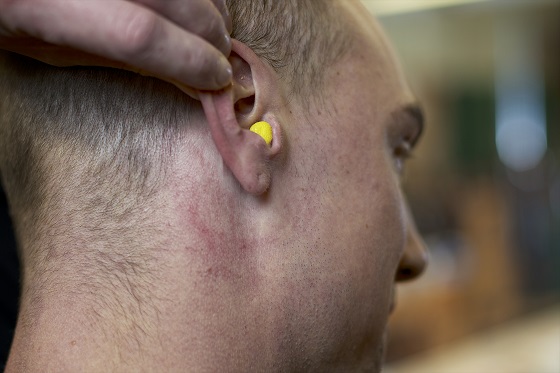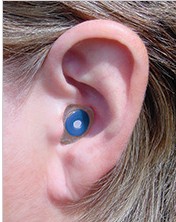Young people entering the workforce need to know how using hearing protection can prevent noise-induced hearing loss that may start early and is irreversible.

Photo credit: © WorkSafeBC (Workers’ Compensation
Board of B.C.), used with permission
On average, around one in 10 workers under the age of 21 shows signs of hearing loss. Raising young workers’ awareness of hearing protection is an important goal for health and safety professionals like Sasha Brown, occupational audiologist at WorkSafeBC.
To support this goal, Sasha and others at WorkSafeBC developed Listen up! How to prevent hearing loss, a one-page information sheet for trade schools, apprenticeship programs, and high schools. All these schools can reach young people before they enter the workplace, so young workers are prepared with the right information to take charge of protecting their hearing.
“We want young people to realize that noise-induced hearing loss is permanent and the only way to prevent it is to do something about it now,” Sasha says. “By the time you’ve got the hearing loss, it’s too late.”
Here are a few more things from the info sheet for young workers — and everyone else, too — to keep in mind:
- Make sure your employer provides you with hearing protection and you wear it when required.
- Be sure you’re protected for the entire time you’re exposed to noise.
- Make sure earplugs fit properly and are inserted correctly (earplugs are only one of many options).
Study shows many young workers in construction not using hearing protection
WorkSafeBC officers will also give out the hearing resource to young workers in the construction industry. In my post, What stops young construction workers from using hearing protection?, I wrote about how 24 percent of young workers (aged 15 to 24) in construction do not use hearing protection. They’re also less likely to wear hearing protection compared with young workers in other industries. This information is based on data from more than 160,000 hearing tests conducted in B.C. in 2016.

Image copied from the Etymotic
Research website
But in addition to construction worksites, there are many other places that can be loud enough to cause hearing damage. Workers in fitness centres, restaurants, and bars can be exposed to lower level noises that, if they continue long enough, can damage hearing over time. (See more information about this in my post, Helping service industry workers hear for good.)
In 2019, WorkSafeBC released a series of three-minute videos that a younger audience could relate to. Each of the three videos shows examples of how noise-induced hearing loss at work can affect your personal life. (See this WorkSafeBC announcement to learn more: Resources to help prevent noise-induced hearing loss.)
Thanks to Sasha for speaking of safety with me — yet again!


